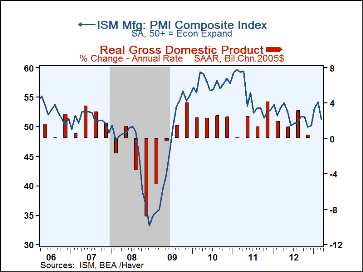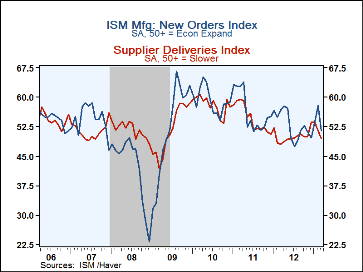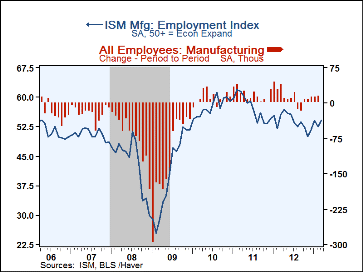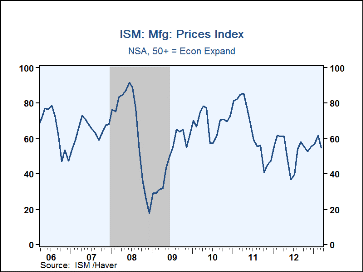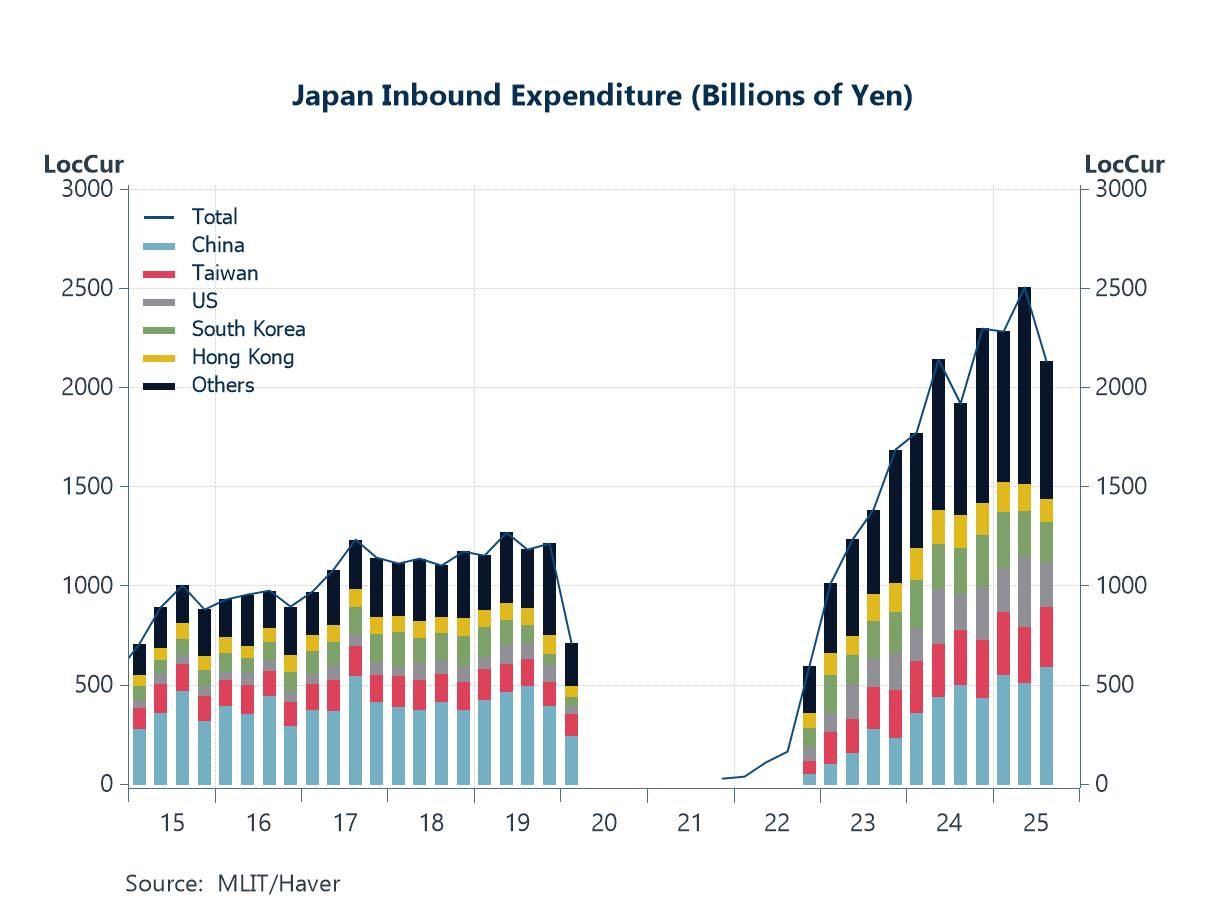 Global| Apr 01 2013
Global| Apr 01 2013U.S. ISM Factory Index Posts Unexpected Decline; Pricing Power Weakens
by:Tom Moeller
|in:Economy in Brief
Summary
Recent improvement in the factory sector stalled last month. The March composite index of manufacturing activity from the Institute for Supply Management fell to 51.3 from an unrevised 54.2 in February. The decline reversed most of [...]
Recent improvement in the factory sector stalled last month. The March composite index of manufacturing activity from the Institute for Supply Management fell to 51.3 from an unrevised 54.2 in February. The decline reversed most of two months' improvement and it disappointed expectations for stability at 54.0. Any figure above 50 indicates an increasing level of activity. During the last ten years, there has been a 69% correlation between the ISM index and the q/q change in real GDP.
Leading the overall index lower were the readings for production (52.2) and new orders (51.4). However, the new export orders figure (56.0) rose to its highest level since April of last year. The inventory index declined to 49.5 while the supplier delivery reading fell to its lowest level (49.4) since May of last year. That indicated faster delivery speeds and more economic slack. Offsetting these declines was a rise in the employment index to 54.2, its highest reading since June of last year. During the last ten years there has been an 88% correlation between the employment index and the m/m change in factory payrolls.
The prices paid index (54.5) weakened sharply last month and reversed three months of improvement. Twenty one percent of firms raised prices while twelve percent lowered them. During the last ten years there has been a 65% correlation between the index and the m/m change in the intermediate producer price index.
The figures from the Institute For Supply Management (ISM) are diffusion indexes and can be found in Haver's USECON database. The expectations data are in the AS1REPNA database.
| ISM Mfg | Mar | Feb | Jan | Mar'12 | 2012 | 2011 | 2010 |
|---|---|---|---|---|---|---|---|
| Composite Index | 51.3 | 54.2 | 53.1 | 53.3 | 51.7 | 55.2 | 57.3 |
| New Orders | 51.4 | 57.8 | 53.3 | 56.8 | 52.9 | 56.4 | 59.2 |
| Production | 52.2 | 57.6 | 53.6 | 55.9 | 53.6 | 57.4 | 61.0 |
| Employment | 54.2 | 52.6 | 54.0 | 55.6 | 53.8 | 57.4 | 57.3 |
| Supplier Deliveries | 49.4 | 51.4 | 53.6 | 48.0 | 50.0 | 54.7 | 58.1 |
| Inventories | 49.5 | 51.5 | 51.0 | 50.0 | 48.2 | 50.1 | 50.8 |
| Prices Paid Index (NSA) | 54.5 | 61.5 | 56.5 | 61.0 | 53.2 | 65.2 | 68.9 |
Tom Moeller
AuthorMore in Author Profile »Prior to joining Haver Analytics in 2000, Mr. Moeller worked as the Economist at Chancellor Capital Management from 1985 to 1999. There, he developed comprehensive economic forecasts and interpreted economic data for equity and fixed income portfolio managers. Also at Chancellor, Mr. Moeller worked as an equity analyst and was responsible for researching and rating companies in the economically sensitive automobile and housing industries for investment in Chancellor’s equity portfolio. Prior to joining Chancellor, Mr. Moeller was an Economist at Citibank from 1979 to 1984. He also analyzed pricing behavior in the metals industry for the Council on Wage and Price Stability in Washington, D.C. In 1999, Mr. Moeller received the award for most accurate forecast from the Forecasters' Club of New York. From 1990 to 1992 he was President of the New York Association for Business Economists. Mr. Moeller earned an M.B.A. in Finance from Fordham University, where he graduated in 1987. He holds a Bachelor of Arts in Economics from George Washington University.


